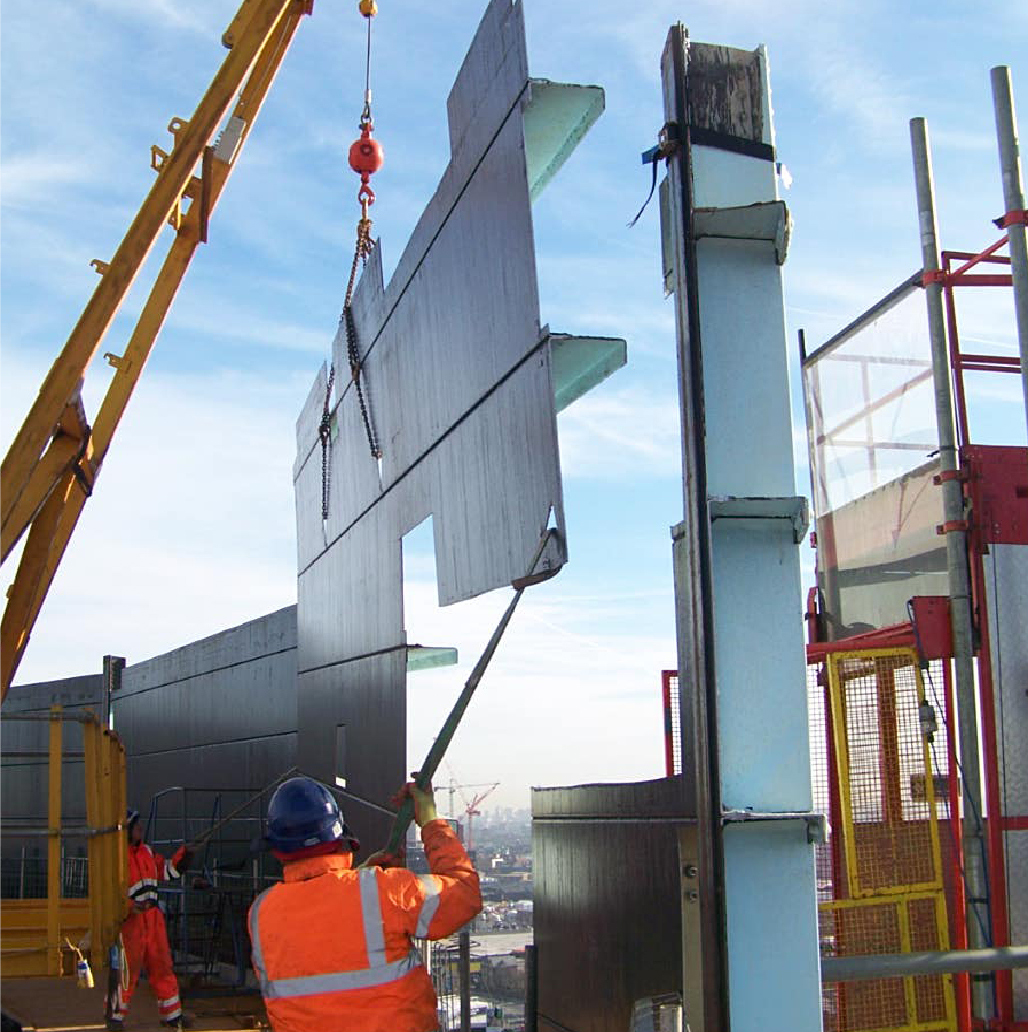Industry leaders in gas holder deconstruction, dismantling and demolition
When National Grid needed to remove four decommissioned gas holders from a busy city centre location in the heart of the London Nine Elms district, they turned to the gas holder deconstruction and demolition capabilities of Colemans.
Having worked with each other for almost 20 years, National Grid knew that Colemans were really the only choice to carry out these complex works. The job required an innovative method of cold cutting while working off a floated piston, something that had only ever been carried out before by Colemans anywhere in the world.
Using specialist cutting experience and resources, this project included the deconstruction of four gas holders on a restricted site adjacent to two elevated main railway lines. Our combined team used engineered solutions to design and complete the works under challenging physical constraints, as part of National Grid’s ongoing programme of gas holder decommissioning and deconstruction.
The five-acre site close to the River Thames and redeveloped Battersea Power Station has since been transformed into a development of 229 affordable homes, as part of an overall project to deliver 926 new homes, office space, café, gym, shops and public realm in the area.
Colemans applied specialist cold cutting techniques to ensure that the highly flammable oil sealed tar lining would not catch fire if hot works were used. This worked hand-in-hand with the safe deconstruction of the gas holders, which stood 50 metres in diameter and up to 90 metres tall.
The deconstruction of the MAN (Maschinenfabrik Augsburg Nürnberg) holders using cold cutting techniques proved central to this project, enhancing safety, mitigating the risks associated with hot works at height and particularly next to live railway lines.
The MAN gas holder were deconstructed using an in-house designed roof mounted crane system. The existing piston within the gas holder was inflated using air blowers to support the gas holder roof and enable it to be cut free. These roof cranes, designed by Colemans’ own project engineers, ran on purpose-made tracks mounted on the floating roof structure. It lifted cut sections of the gas holder to the ground as our team lowered the roof by adjusting the air pressure.
The roof, piston and the final sections of shell plate of the MAN gas holders were then removed using excavators fitted with shears.
Putting the circular economy at the heart of our business, we recycled 3,500 tonnes of scrap steel and sent general waste to a waste transfer station for segregation and recycling.
In total, we imported 60,000m3 of fill material to the site to backfill the below ground, water sealed gas holders.
Our team had to plan carefully to ensure they overcame site challenges and unique conditions due to the site use.
Prior to deconstruction the gas holders were de-watered and de-sludged by our specialist environmental and remediation team, in line with strict environmental procedures and legislation. The sludge was then processed via a centrifuge plant, resulting in a significant reduction in contaminated waste.
The gas holders were close to Battersea Dogs and Cats Home, just metres away from two elevated main railway lines into London and the iconic Battersea Power Station. Presenting further challenges, the site sat on a main access road, close to local schools and residential dwellings.
Significant plans and methodologies were put in place to ensure a collaborative project, taking into account emergency response plans and working to Network Rail’s own internal standards and processes at all times. This included the appointment of a Contracts Engineering Manager and Contract Responsible Engineer, as well as an emergency repair/maintenance standby contractor. Strict approvals were required from Network Rail Asset Protection for all works and vibration monitoring undertaken close to tracks to ensure there our works did not have any impact.
The project was considered highly sensitive with the huge risk of fire and due to its proximity to live rail lines, local residences and other businesses.
Despite this, thanks to careful planning and close liaison with all stakeholders and the local community, no complaints were received.
Throughout the works, we undertook environmental noise, depositional dust and occupational hygiene monitoring to determine the level of exposure to neighbouring properties and to our employees. This is part of Colemans’ continued commitment to wellbeing for all.
We kept disruption to the surrounding properties to a minimum thanks to a series of measures including agreed restrictions on when some activities were carried out, a dedicated Banksman for deliveries and successful traffic management. Our own site manager monitored the site-specific logistics plan daily.
In addition, a number of heritage restoration, community, school and media projects were delivered as part of the project, including converting the old Engineers House into a public gallery and a donation of shields to local schools, museums and societies. A local primary school ran a project to build a mosaic MAN holder and the project featured on the BBC Documentary, ‘The Wrecking Crew’.










